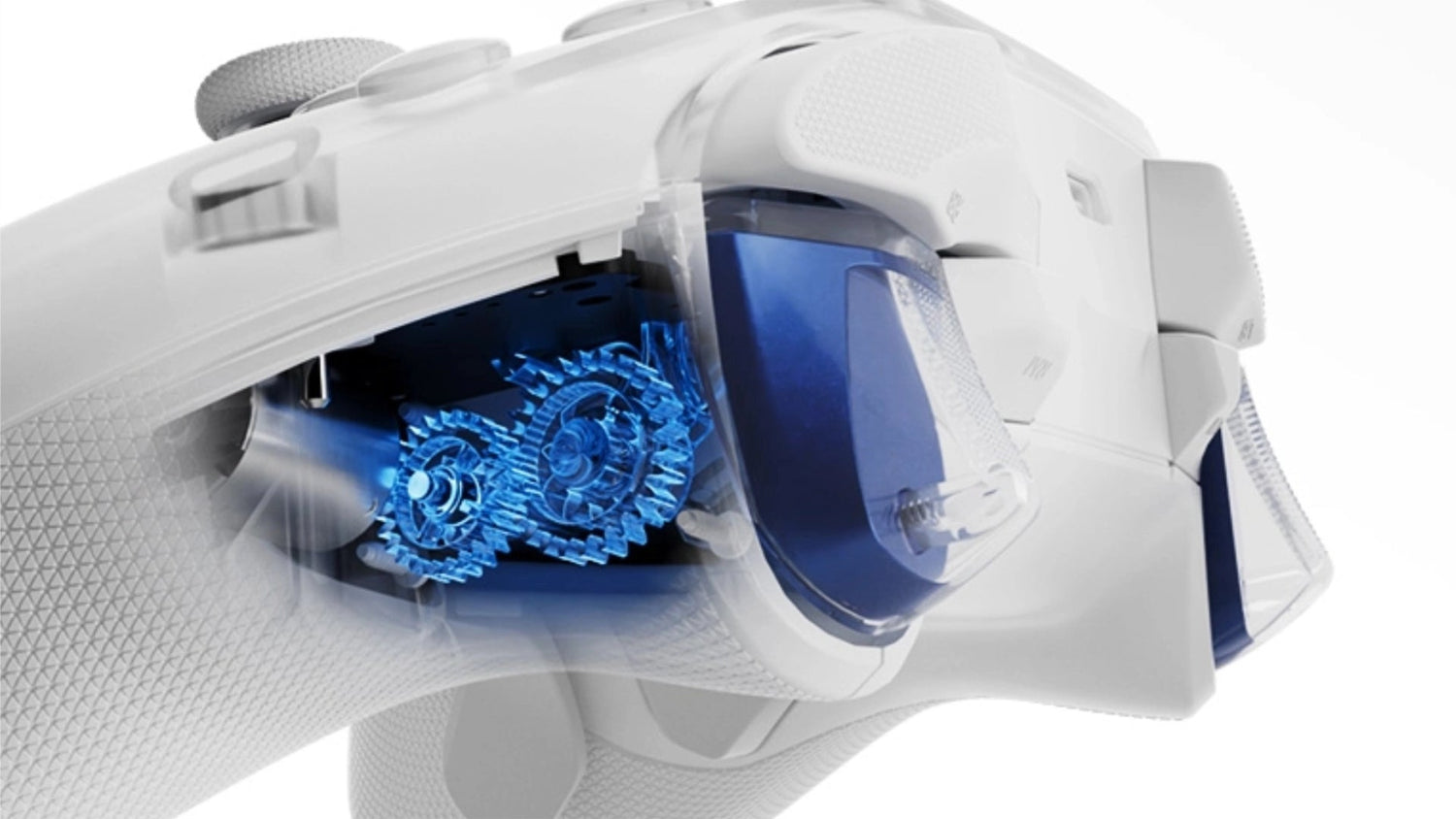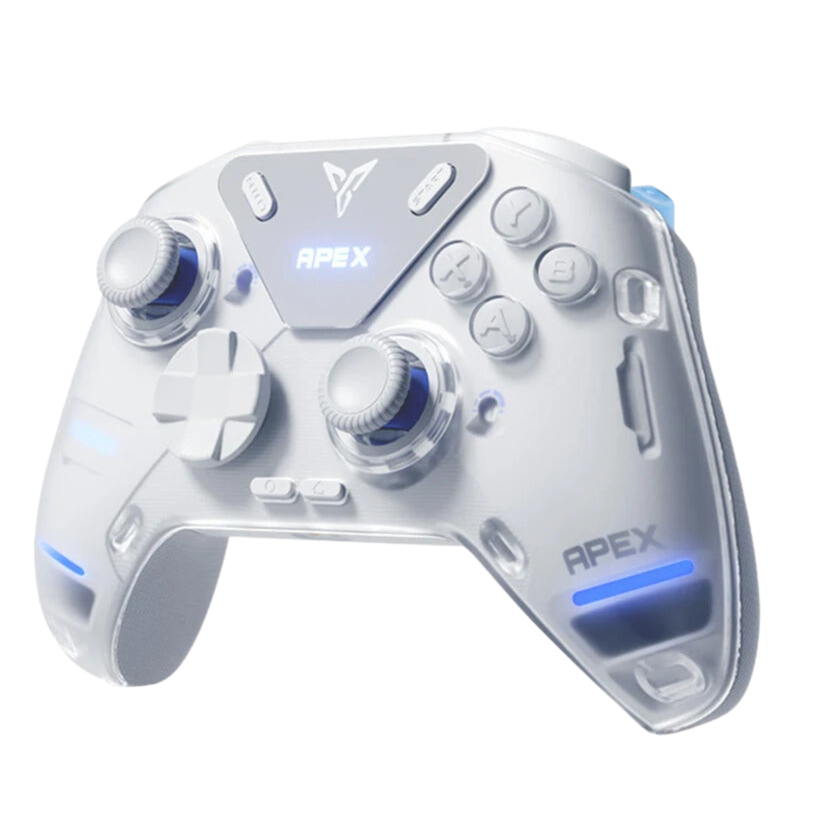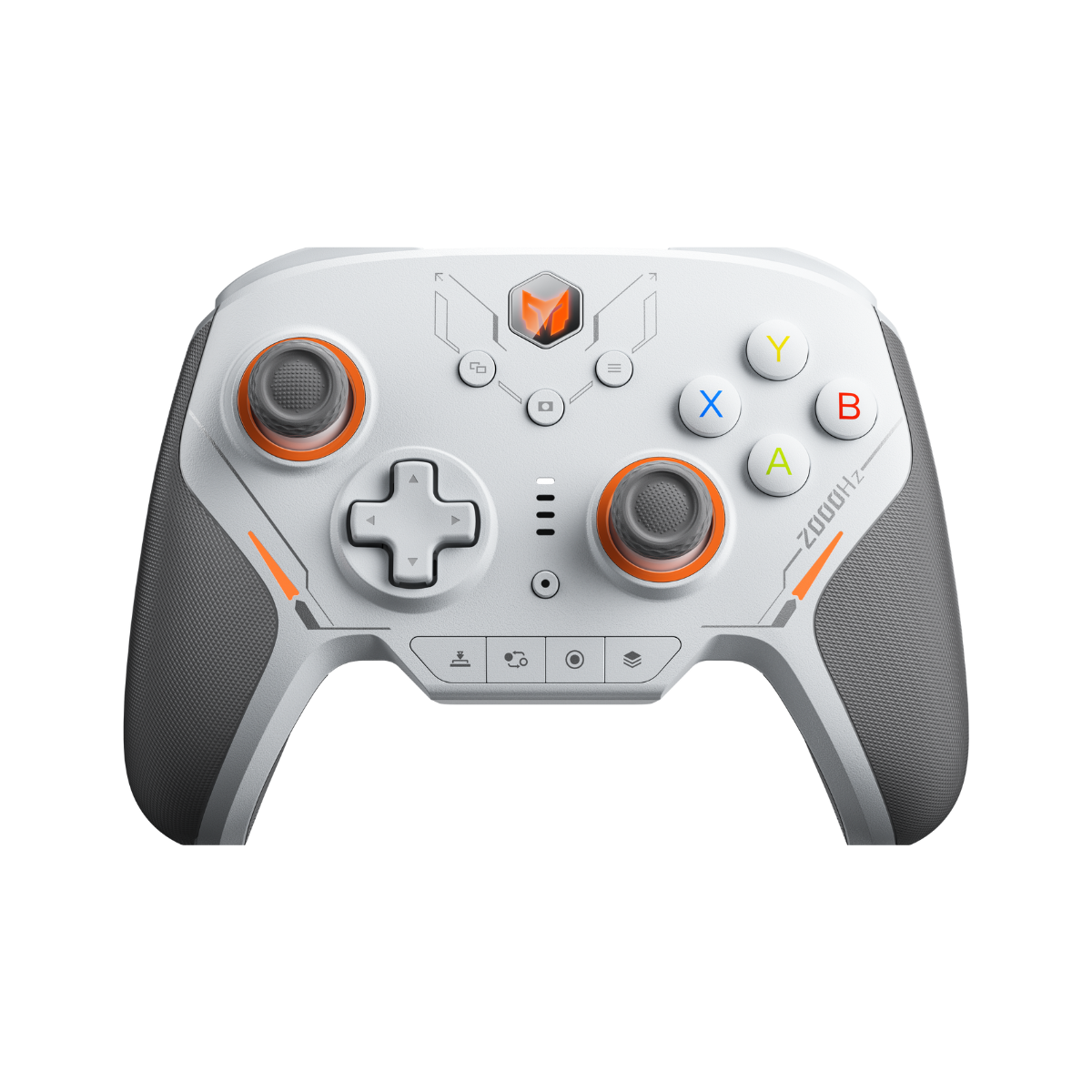
Apex 5 Trigger Vibration Motor — What It Does & Why It Matters
Flydigi's FORCEADAPT trigger system brings servo-controlled, micro-precision force feedback to the Apex 5. This article explains the hardware stack — intelligent chip, high-precision servo, micron-level gears — and why per-trigger haptics matter for racing throttle feel and weapon recoil in shooters.
View Apex 5 — $159.99Released June 10, 2025 • Supports 60+ games with adaptive trigger profiles
FORCEADAPT Triggers — Next-Gen Immersive Haptics
"Self-developed FORCEADAPT triggers. Ultra-precise force feedback servo + micron-level gear structure delicately replicates the game world's dynamic physical impacts onto players' fingertips."
In practical terms, FORCEADAPT combines sensors and a precise actuator chain to convert in-game parameters (like acceleration or recoil magnitude) into targeted force outputs on the trigger. Instead of generic rumble, Apex 5's triggers provide differentiated, context-aware responses — lighter resistance for gradual throttle, sharp pulses for weapon recoil.

Internal architecture: Intelligent chip, servo motor, and micron-level gear transmission
Inside the Trigger — Component Roles
- Intelligent Chip: Analyses game data streams and outputs real-time haptic parameters.
- FORCEADAPT Triggers: The user-facing mechanism that translates parameters into tactile sensations.
- High-Precision Servo: Receives parameterized signals and controls servo voltage to modulate force output.
- Highly Flexible Gear Set: Micron-level gear train that transmits torque to the trigger surface with minimal mechanical noise.
Delicate Replication — Dynamic Physical Impacts
The Apex 5 trigger stack is built to emulate two major types of in-game feedback:
- Racing games: authentic throttle progression — from light to heavy resistance — that mirrors acceleration curves and pedal feel.
- Shooters: weapon-specific recoil impulses that let players feel the recoil pattern on their fingertips, improving micro-corrections and situational awareness.

Racing: Progressive throttle resistance

Shooters: Weapon-specific recoil pulses
Because the system is parameter-driven (via the intelligent chip), developers and firmware updates can expand and refine how triggers behave — which is why Flydigi lists 60+ supported games and counting.
Why Trigger Haptics Matter for Gameplay
High-fidelity trigger feedback provides two measurable benefits:
- Action-specific cueing: Instead of a general vibration that masks detail, per-trigger haptics present targeted cues (e.g., onset of turbo, weapon jam, low traction). Players can react faster because the sensation carries clear meaning.
- Enhanced motor learning: Repeated tactile patterns (like recoil pulses) help players internalize timing and compensation, which translates into more consistent aim corrections and smoother throttle control.

Precision-engineered trigger housing with servo-driven haptic system
Real-World Examples — What You'll Actually Feel
Throttle in a racing sim: the trigger increases resistance along a curve as you feed throttle, allowing finer modulation at low speeds and firmer control at full throttle. Weapon recoil in shooters: short, high-frequency impulses simulate muzzle rise and follow-through, giving a fingertip-level cue that complements visual recoil.
How Apex 5 Implements Adaptivity — Practical Notes
- Profiles & presets: use the built-in smart screen or companion app to switch trigger profiles per game or per weapon class.
- Firmware updates: Flydigi can ship updated haptic mappings to increase the list of supported titles beyond 60+.
- Latency & response: trigger haptics are handled locally by the Apex 5's chip-servo chain — the result is immediate feedback aligned with game events, not dependent on cloud or delayed processing.
Tuning Tips — Get the Most from FORCEADAPT
- Start with default profile: default mappings are tuned for a broad balance — fine-tune if a game offers per-weapon profiles.
- Lower intensity for long sessions: high-intensity servo output can be fatiguing; reduce intensity for extended play.
- Match in-game sensitivity: pair trigger curves with in-game throttle/recoil settings to avoid conflicting input expectations.
- Keep firmware current: new titles and improved mappings are delivered via firmware — update regularly for best experience.

Flydigi Apex 5: Hall-effect joysticks, FORCEADAPT triggers, built-in smart screen
Limitations & What to Watch For
FORCEADAPT delivers nuanced feedback, but two practical limits exist: (1) Per-title support depends on developer/firmware mappings — not every title will have perfect haptic profiles at launch; (2) mechanical wear is mitigated by the micron-level gear design, but heavy, constant high-force use may accelerate wear — stick to recommended intensity ranges for longevity.
Conclusion — When Trigger Haptics Move from Gimmick to Gameplay Tool
The Flydigi Apex 5's FORCEADAPT system is engineered to be meaningful rather than decorative. By converting game parameters into precise, servo-driven trigger forces, Apex 5 provides players with actionable tactile cues that enhance throttle control in racing and recoil management in shooters. For competitive or simulation players who value sensory detail, this is a genuinely useful hardware innovation.
Learn More & Buy
For full specs, images, and purchasing: Flydigi Apex 5 product page.
Quick FAQ
Q: How many games support Apex 5's adaptive triggers?
A: 60+ titles are supported today, with additional games added via firmware updates.
Q: Will trigger feedback affect button travel or input timing?
A: No — the system modulates force feedback independently of trigger digital input, so actuation timing remains consistent for gameplay.







Leave a comment
All comments are moderated before being published.
This site is protected by hCaptcha and the hCaptcha Privacy Policy and Terms of Service apply.